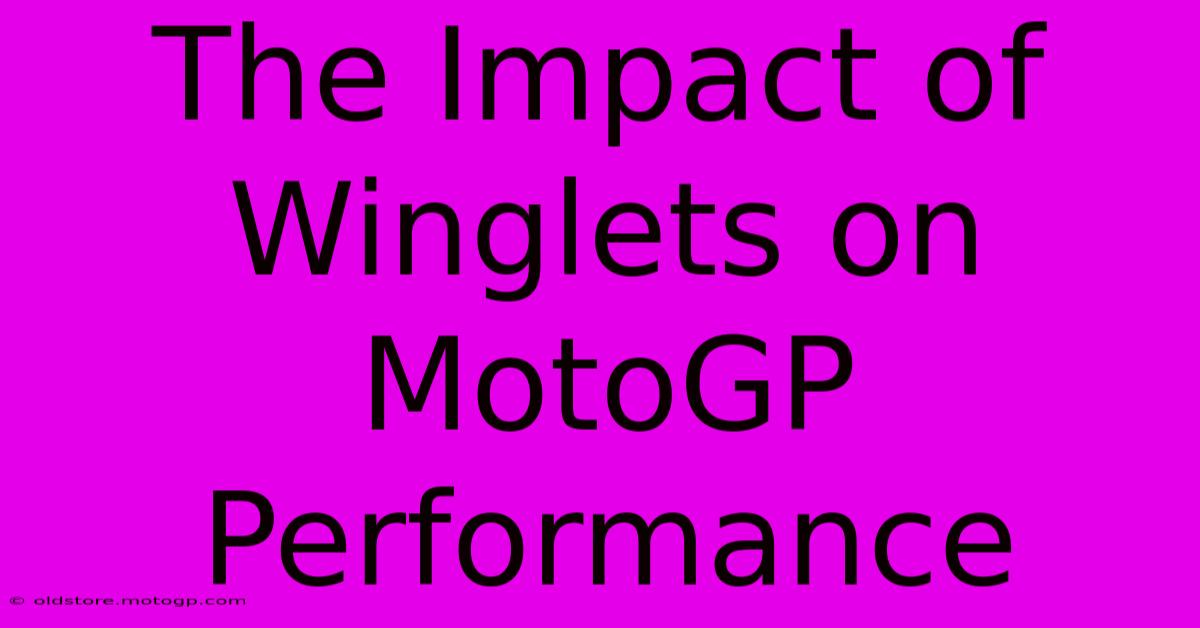The Impact Of Winglets On MotoGP Performance

Table of Contents
The Impact of Winglets on MotoGP Performance: A Deep Dive
The roar of the engines, the screech of tires, the breathtaking speed—MotoGP is a spectacle of precision and power. In recent years, a significant aerodynamic addition has transformed the sport's landscape: winglets. These small, wing-like appendages attached to the fairings have sparked intense debate, impacting everything from race strategies to rider safety. This article delves into the profound impact of winglets on MotoGP performance.
Understanding the Aerodynamics of Winglets
Winglets, in essence, generate downforce. Unlike traditional wings that produce lift, winglets are designed to push the motorcycle down onto the track. This increased downforce offers several key advantages:
Enhanced Cornering Speed
The most significant impact of winglets is the ability to corner at higher speeds. The increased downforce provides superior grip, allowing riders to maintain higher lean angles and accelerate harder out of corners. This translates directly into faster lap times.
Improved Stability
By pressing the bike firmly to the track, winglets enhance stability, particularly at high speeds and during braking. This improved stability reduces the risk of high-side crashes—a dangerous type of accident common in MotoGP.
Reduced Wheelies
The increased downforce also helps to mitigate wheelies, especially during acceleration. This allows riders to apply more power earlier, further improving lap times and overtaking opportunities.
The Evolution and Controversies Surrounding Winglets
The introduction of winglets wasn't without its share of controversies. Initially, their use was relatively unregulated, leading to an arms race amongst manufacturers, with increasingly complex and larger designs.
The Safety Debate
Concerns about rider safety arose, particularly regarding the potential for winglets to cause injury in the event of a crash. The sharp edges and protruding design presented a risk of lacerations or even more serious injuries to other riders involved in an accident.
Regulatory Changes
This led to the introduction of stricter regulations by the FIM (Fédération Internationale de Motocyclisme), limiting the size, shape, and placement of winglets. These rules aimed to balance performance gains with safety considerations.
The Current State of Winglets in MotoGP
Today, winglets remain a vital part of MotoGP aerodynamics, though their design is significantly more standardized than in the early years. Manufacturers continue to refine their designs, seeking marginal gains within the regulatory framework.
Ongoing Development and Refinement
The quest for optimal aerodynamic performance is ongoing. Teams use sophisticated Computational Fluid Dynamics (CFD) simulations and wind tunnel testing to optimize winglet design for specific tracks and riding styles. Even subtle changes can significantly impact a rider's performance.
Conclusion: A Balancing Act
Winglets have fundamentally reshaped MotoGP, significantly impacting performance and raising important safety discussions. While the initial period of unregulated development saw increasingly aggressive designs, current regulations provide a more balanced approach. The ongoing development and refinement of winglets demonstrate their enduring importance in the pursuit of speed and victory in the world's premier motorcycle racing championship. The future of MotoGP aerodynamics will undoubtedly continue to see innovation, but with a continued focus on safety.

Thank you for visiting our website wich cover about The Impact Of Winglets On MotoGP Performance. We hope the information provided has been useful to you. Feel free to contact us if you have any questions or need further assistance. See you next time and dont miss to bookmark.
Featured Posts
-
Concerts Under The Stars Circuit Of The Americas Schedule
Feb 19, 2025
-
Cota Qualifying Achieve Your Full Potential
Feb 19, 2025
-
Cota Shuttle Service Designed For F1 Fans
Feb 19, 2025
-
Moto Gp Sprintrennen A Revolution In Motorcycle Racing
Feb 19, 2025
-
The Moto Gp Rider With The Most Natural Talent
Feb 19, 2025
